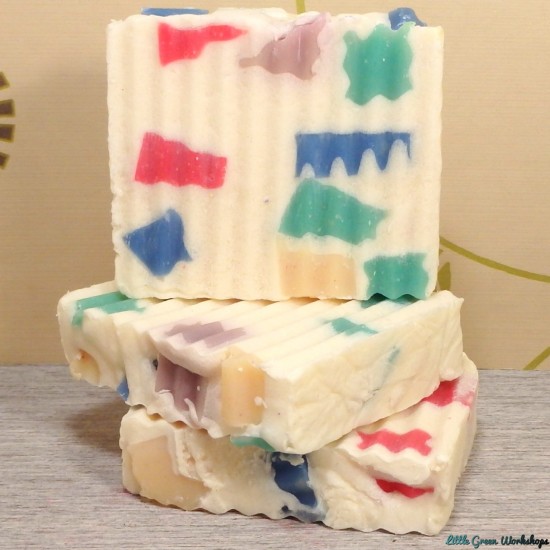Soap Making
Seven Nasty Chemicals That You Won’t Find in Homemade Soap
Our soaps are made with vegetable oils, lye, water, colours, and phthalate free fragrance oils. That’s it. Nothing else.
Compare that to the ingredients on a commercial bar of soap, and you may be shocked to find all sorts of nasty chemicals on the list. Here are a few that you may find that certainly aren’t the best things to have next to your skin.
The Bad
Triethanolamine – is an ingredient common to branded soaps. This is a possible human carcinogen that is linked to other health problems. When this ingredient is present, three other chemicals also go along with this: sodium lauroyl sarcosinate, TEA-stearate and tocopherol. All these do not exempt from causing mild to serious health problems.
PEG-6 and sodium PCA – These chemicals are usually found in cleansing bar soaps, they may contain harmful impurities that are linked with cancer to other health problems.
Chemical surfactants–Sodium lauryl sulfate is usually added to increase the lather quality, along with Sodium Laureth Sulfate (SLES). According to, The Journal of The American College of Toxicology (ACT) in 1983, concentrations of sodium lauryl of as low as 0.5% could cause irritation. Here’s something that may shock you: Studies have shown that numerous soaps have concentrations of up to 30%. The ACT has reported this to be highly irritating and dangerous.
Propylene Glycol – a common ingredient in soaps, is a penetration enhancer. All these previously mentioned chemicals can be further activated, stimulated and enhanced by propylene glycol. This chemical poses risks of other health concerns.
Triclosan – a chemical used for its antibacterial properties, is an ingredient in many detergents, dish-washing liquids, soaps, deodorants, cosmetics, lotions, antimicrobial creams, various toothpaste. However, the safety of triclosan has been questioned in regard to environmental and human health. While the companies that manufacture products containing this chemical claim that it is safe, the United States Environmental Protection Agency (EPA) has registered it as a pesticide. The chemical formulation and molecular structure of this compound are similar to some of the most toxic chemicals on earth, relating it to dioxins and PCBs. The EPA gives triclosan high scores both as a human health risk and as an environmental risk.
Fragrances Containing Phthalate– Artificial fragrances are chemical agents used in soap to enhance their scent. While natural oils or fragrances are typically good for your skin, chemical fragrances can have the opposite effect and contribute to skin irritation. Many fragrances contain the chemical phthalate. Some of these phthalate derivatives have been banned in the EU.
Parabens – Parabens (such as methylparaben and propylparaben) are preservatives that are commonly added to bars of soap. However, some scientific studies have shown that being exposed to parabens boosts a woman’s risk of developing any form of breast cancer (because parabens mimic the action of the hormone estrogen).
The Good
So for one who is conscious about their health, what can one do about this?
Well for one, stop buying these chemical cocktails that are passed off as “soap”, then start making your own. When Kim and I found out about these issues, the first thing we did was to ditch our old soap and started to make our own. Once we mastered the technique, we didn’t look back and have been using natural soap for over five years. We loved soap making so much, we decided to teach others soap making skills in our simple living workshops.
We had so much great feedback that we decided to develop soap making kits for those who couldn’t make it to our classes. We now have soap starter kits available that you can use to make your own cold process soap, safely in your own home.

However, we understand that many of you may be time poor. It’s not easy to find time to set aside to dedicate to soap making, especially when you have children that demand your attention.
That is why Kim and I also have handmade soap for sale, using the cold process technique with vegetable oils, lye, and water.

Each bar has been fully cured for six weeks and many of our latest creations are available for sale in our shop. We use our handmade soap for personal use and in the laundry. It’s amazing stuff.
We currently have all of our handmade soap on sale for a limited time. We have an oversupply, so need to make room in the soap storage cupboard for a few a few more batches that are nearly cured.
So do yourself a favour, throw away the chemical nasties, and check out our soap making kits and handmade soap. You will be amazed how easy it is to make at home.


Thank you for your help